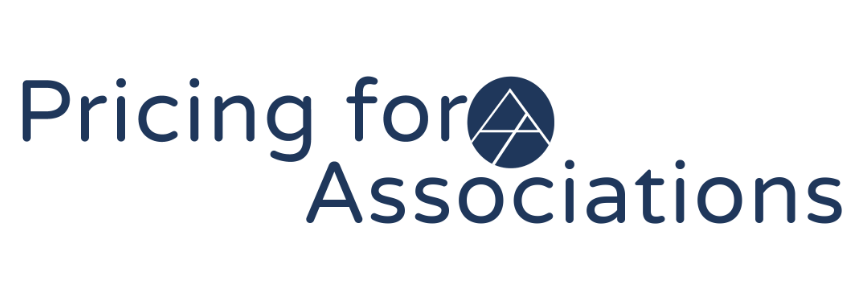Leveraging Focus Groups for Product Value
The following is an excerpt from our book, Pricing for Associations, available now on Amazon.
Beyond an initial survey to gather large sets of data for the value your new or improved product will deliver, we recommend conducting focus groups for anything that will be at scale - anything member or attendee facing. This allows you to create focus groups by segments to gain more specific insights by asking the right questions based on survey data.
When to Conduct Focus Groups
Focus groups should follow a preliminary survey to gather quantitative data. After identifying segments from survey respondents who displayed varying degrees of interest (positive, negative, and neutral), it's time to delve deeper. This stage is crucial for gaining qualitative insights that provide context to survey findings.
Purpose of Focus Groups
The primary purpose is to unearth nuanced opinions, motivations, and concerns that quantitative data might not capture. Focus groups create a space for participants to express themselves freely, offering a richer understanding of their experiences and expectations.
Pros and Cons of Internal vs. External Facilitation:
Internal Facilitation (Association Staff):
Pros: In-depth knowledge of the association, industry, and existing dynamics.
Cons: Potential bias, participant hesitation due to familiarity.
External Facilitation (Third-Party Firm):
Pros: Objective perspective, expertise in moderating discussions, knowledge of other associations and trends for benchmarking and ideation.
Cons: Limited understanding of the association's intricate details, building initial trust.
Focus Group Question Template:
Opening Statement: "Hello! My name is ___ and on behalf of ORG, we want to thank you for volunteering your time today to make PRODUCT even better. I am not a part of the organization, so anything you share will not hurt my feelings - please be honest and give your positive and critical feedback. ORG desires this to be their best. Today, we’re going to spend 60 minutes together, and it’ll fly by. To start, I’m going to make sure I have noted who is present, then I’ll share more about the program to get your feedback until our time is up."
Attendance:
Take attendance and ask each person to share their name and state or organization to build some trust and familiarity amongst the group. This is also a good time to tell them “you’re all large orgs, small independent orgs, new members, season members” so they find connection and common ground.
Program Share:
Share a video or imaging representing the product, as well as 2-3 key findings from the survey, ideally their specific segment.
Key Questions:
How do these survey responses resonate with you? Do you agree or disagree with these findings?
How can you see you and/or your organization utilizing this product?
How could this product best be packaged - for one-time use, annual subscription, team membership?
How would it be best for your team to pay for this? One time? Annually? As you go?
If you could add anything to PRODUCT to help you perform your work better, what would it be?
Is there anything else you’d like to share?
Facilitator Clarifying Questions:
Can you tell me more about that?
Help me understand what you mean.
Can you give me an example?
Thank you - what do other people think?
So what I hear you saying is…
That’s a fascinating point - what do the rest of you think about that?
Do you all agree or disagree with [name’s] statement? Why?
[Name] you’ve been quiet recently, do you have any thoughts about _______
Product Category-Specific Questions
For Membership:
What exclusive benefits would entice you to consider a membership?
How important is access to premium content in influencing your decision to join?
What networking features would you find most valuable as a member?
For Educational Offerings:
Which learning formats do you find most effective?
Are there specific topics or areas of expertise you feel are lacking in current educational offerings?
How important is industry certification or recognition in your decision to participate in educational programs?
For Certification:
What certifications are currently recognized as valuable in your industry?
Are there gaps in existing certifications that one could fill?
How does the credibility of the certifying body influence your decision to pursue a certification?
For Events:
What types of events do you find most valuable for professional development?
How crucial is the inclusion of expert panels or keynote speakers in your decision to attend an event?
Are there specific networking formats you prefer at events?
For Sponsorship Opportunities:
What visibility options are most attractive to your organization in a sponsorship opportunity?
How does alignment with your organization's values and mission impact your interest in sponsorship?
Are there specific industries or sectors you would prefer to connect with through sponsorships?
These questions aim to elicit comprehensive insights tailored to each product category, empowering associations with the knowledge needed for informed decision-making and successful product launches.


